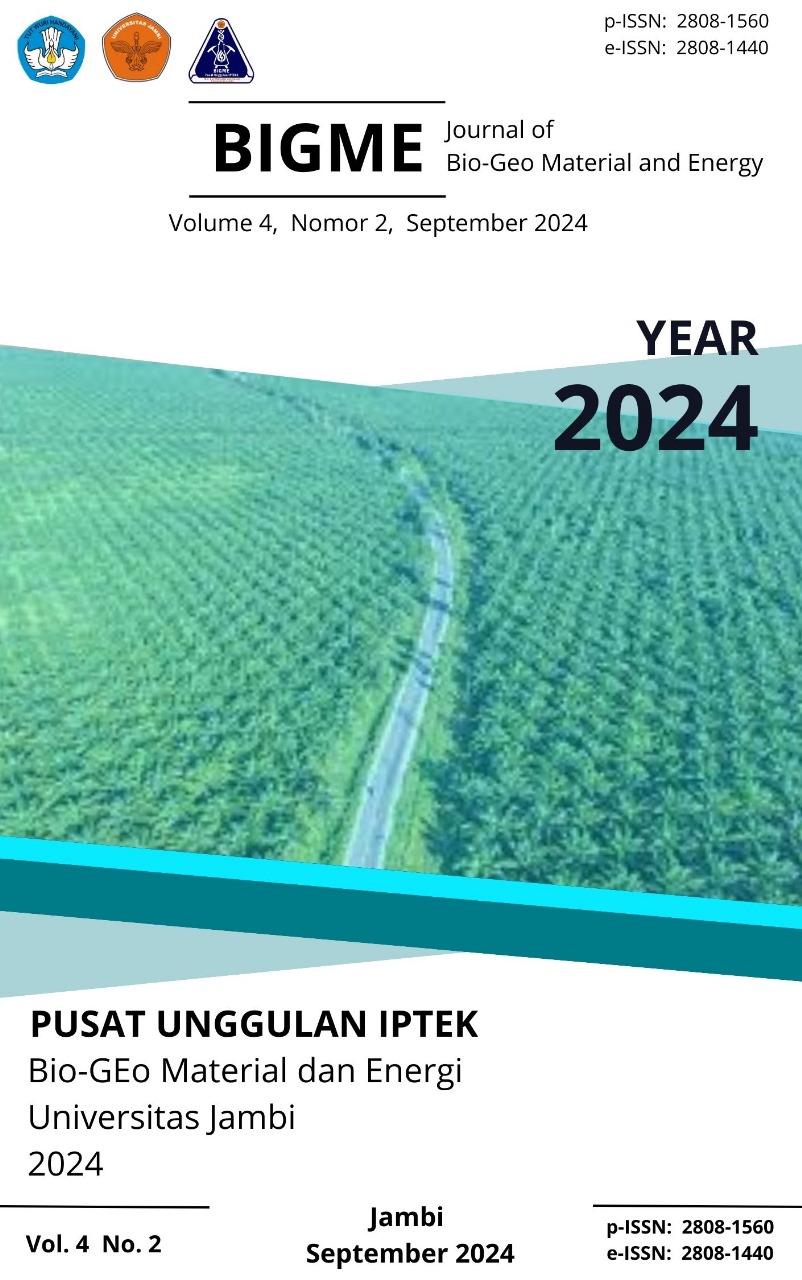Evaluation of Physicochemical and Sensory Properties of Composite Flour from Cocoyam and Mungbean and Their Fufu-Like Products
Composite Flour from Cocoyam and Mungbean
DOI:
https://doi.org/10.22437/jbigme.v4i2.33762Keywords:
Cocoyam, Mung bean, fufu-like, composite flour, functional properties, sensory propertiesAbstract
This study evaluated the physiochemical and sensory properties of composite flour from cocoyam and mungbean and their fufu-like products. Cocoyam and mungbean flours were produced and blended into different proportions (100:0, 90:10, 80:20, 70:30, 60:40 and 50:50). Flour made from 100% cocoyam served as the control. The proximate composition, functional, physicochemical and pasting properties of the cocoyam and mungbean composite flour and sensory properties of their fufu-like products were evaluated using standard procedures. The data generated were statistically analysed by One Way Analysis of Variance (ANOVA) using Statistical Product of Service Solution (Version 22). The result of the functional properties of the flour blends showed that the bulk density ranged from 0.68 to 0.83 g/ml, 1.12 to 1.61 g/ml (water absorption capacity), 0.39 to 0.62 Sec (wettability) and 66.00 to 83.50 °C (gelatinization temperature). The result of the proximate composition showed that the moisture content ranged from ranged from 8.57 to 8.92 %, 7.11 to 15.58 % (crude protein), 1.37 to 1.78 % (fat), 2.96 to 5.05 % (crude fibre), 1.82 to 3.85 % (ash,) 65.18 to 77.90 % (carbohydrate). Physicochemical properties of the flour blends showed that the pH ranged from 6.07 to 6.49, 0.54 to 1.02 g/cm2 (specific gravity), 0.15 to 0.68 % (total titratable acidity) and 1.66 to 1.72 NTU (turbidity). The sensory properties of the fufu-like products made from flour blends of cocoyam and mungbean showed the fufu-like products were generally accepted by the panelists. Therefore, flour and fufu-like products of acceptable and good quality can be produced from blends of cocoyam and mungbean. This will help increase the utilization of cocoyam and mungbean in food system.
Downloads
Downloads
Published
How to Cite
Issue
Section
License
Copyright (c) 2024 Dr. B.I. Offia-Olua, Kasie Okakpu, Chidiebere Okakpu, Uzochukwu Onwuzuruike, O.D Okafor

This work is licensed under a Creative Commons Attribution 4.0 International License.














